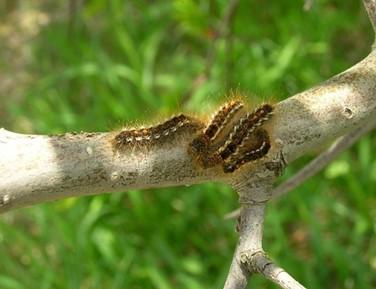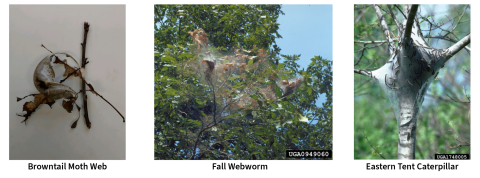
Browntail Moth (Euproctis chrysorrhoea)
Browntail moth (Euproctis chrysorrhoea) was accidentally introduced to North America in the late 1800’s. The infestation spread from Massachusetts to New Hampshire and Maine and by the 1930. This caterpillar is not known as a major tree killer but is considered a serious human health risk. The hairs of the caterpillar are barbed and contain toxins that create rashes on human skin.
Decades of control efforts in combination with biocontrol research suppressed the population into a very small coastal area on the coast of Maine. In recent years the browntail moth as developed into outbreak status and has spread west and south to the NH border.
The browntail moth nests should be removed and destroyed between November and April.
Browntail nests are small silken webs of two or three leaves at the tips of the branches. They appear in late summer and last throughout the winter on the very tips of branches. This distinguishes them from eastern tent caterpillar, which shows up in the spring and webs together large portions of complete branches. Browntail webs can also be distinguished from fall webworm nests because the fall webworm appears in late summer and webs together many branches.

In Recent News
Browntail moth caterpillars may be facing ‘zombie’ apocalypse in Maine

